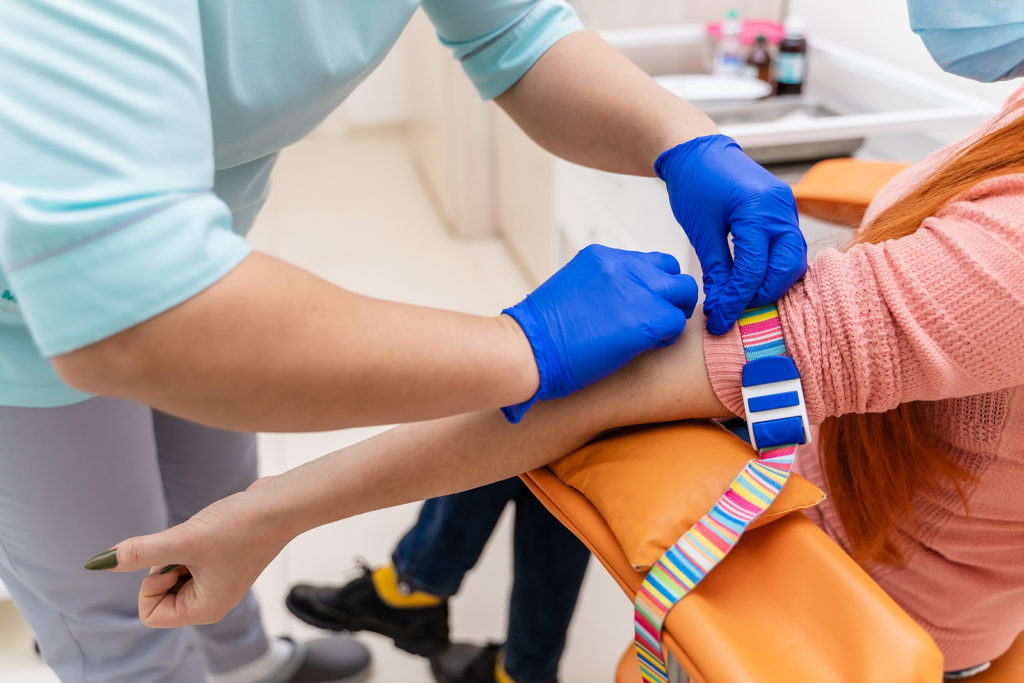Everything about Northeast Medical Institute - New Haven Campus Phlebotomy Course & Cna Class
Everything about Northeast Medical Institute - New Haven Campus Phlebotomy Course & Cna Class
Blog Article
6 Simple Techniques For Northeast Medical Institute - New Haven Campus Phlebotomy Course & Cna Class
Table of ContentsThe 9-Minute Rule for Northeast Medical Institute - New Haven Campus Phlebotomy Course & Cna ClassSee This Report about Northeast Medical Institute - New Haven Campus Phlebotomy Course & Cna ClassHow Northeast Medical Institute - New Haven Campus Phlebotomy Course & Cna Class can Save You Time, Stress, and Money.The Ultimate Guide To Northeast Medical Institute - New Haven Campus Phlebotomy Course & Cna ClassExcitement About Northeast Medical Institute - New Haven Campus Phlebotomy Course & Cna ClassSome Of Northeast Medical Institute - New Haven Campus Phlebotomy Course & Cna Class
The use of such gadgets must be gone along with by various other infection prevention and control methods, and training in their use. Not all safety devices apply to phlebotomy. Before choosing a safety-engineered device, users ought to completely examine available devices to determine their appropriate use, compatibility with existing phlebotomy techniques, and efficiency in securing personnel and clients (12, 33).For settings with reduced sources, expense is a driving consider purchase of safety-engineered gadgets - CNA Classes. Where safety-engineered tools are not readily available, experienced use of a needle and syringe serves. Unexpected exposure and specific details regarding an event should be videotaped in a register. Assistance solutions need to be advertised for those that go through accidental direct exposure.
labelling); transport problems; analysis of outcomes for professional management. In an outpatient department or center, supply a dedicated phlebotomy cubicle containing: a clean surface with two chairs (one for the phlebotomist and the other for the individual); a hand laundry container with soap, running water and paper towels; alcohol hand rub. In the blood-sampling area for an outpatient division or facility, supply a comfy reclining sofa with an arm remainder.
All about Northeast Medical Institute - New Haven Campus Phlebotomy Course & Cna Class
Make sure that the indicators for blood sampling are plainly defined, either in a written method or in recorded directions (e.g. in a research laboratory form). In any way times, comply with the strategies for infection avoidance and control noted in Table 2.2. Infection avoidance and control methods. Collect all the devices needed for the treatment and place it within secure and simple reach on a tray or cart, making certain that all the products are plainly visible.
Introduce yourself to the individual, and ask the person to mention their complete name. Check that the laboratory type matches the person's identification (i.e. match the person's information with the laboratory kind, to ensure exact identification).
Make the patient comfy in a supine position (ideally). Location a clean paper or towel under the individual's arm. Discuss the test to be carried out (see Annex F) and get verbal approval. The person has a right to refuse a test any time prior to the blood tasting, so it is important to ensure that the person has actually understood the procedure.
The Of Northeast Medical Institute - New Haven Campus Phlebotomy Course & Cna Class
Extend the client's arm and check the antecubital fossa or lower arm. Locate a capillary of a great dimension that is noticeable, straight and clear.
DO NOT insert the needle where capillaries are drawing away, due to the fact that this increases the possibility of a haematoma. Finding the blood vessel will help in identifying the proper dimension of needle.
Haemolysis, contamination and presence of intravenous fluid and medicine can all alter the results (39. Nursing team and medical professionals may access central venous lines for samplings following protocols. Nevertheless, samplings from central lines bring a danger of contamination or incorrect lab examination outcomes (https://allmyfaves.com/northeastmed?tab=northeastmed). It is appropriate, however not optimal, Recommended Site to injure samplings when initial introducing an in-dwelling venous device, prior to attaching the cannula to the intravenous fluids.
Northeast Medical Institute - New Haven Campus Phlebotomy Course & Cna Class for Beginners
Enable the location to completely dry. Failure to permit enough get in touch with time raises the risk of contamination. DO NOT touch the cleaned up website; specifically, DO NOT put a finger over the blood vessel to guide the shaft of the subjected needle. It the website is touched, repeat the disinfection. Carry out venepuncture as adheres to.
Ask the client to develop a hand so the blood vessels are more popular. Go into the blood vessel promptly at a 30 level angle or much less, and proceed to introduce the needle along the vein at the easiest angle of entry - Phlebotomy Classes. As soon as enough blood has actually been accumulated, launch the tourniquet prior to taking out the needle
Indicators on Northeast Medical Institute - New Haven Campus Phlebotomy Course & Cna Class You Need To Know
Withdraw the needle delicately and apply gentle stress to the site with a tidy gauze or dry cotton-wool ball. Ask the patient to hold the gauze or cotton wool in position, with the arm extended and elevated. Ask the client NOT to flex the arm, since doing so causes a haematoma.

The 9-Second Trick For Northeast Medical Institute - New Haven Campus Phlebotomy Course & Cna Class
Do not press the syringe bettor because additional pressure increases the threat of haemolysis. Where possible, keep televisions in a shelf and move the shelf towards you. Infuse downwards into the suitable coloured stopper. DO NOT get rid of the stopper since it will certainly launch the vacuum. If the sample tube does not have a rubber stopper, infuse very gradually right into television as decreasing the pressure and speed made use of to move the specimen minimizes the threat of haemolysis.

Report this page